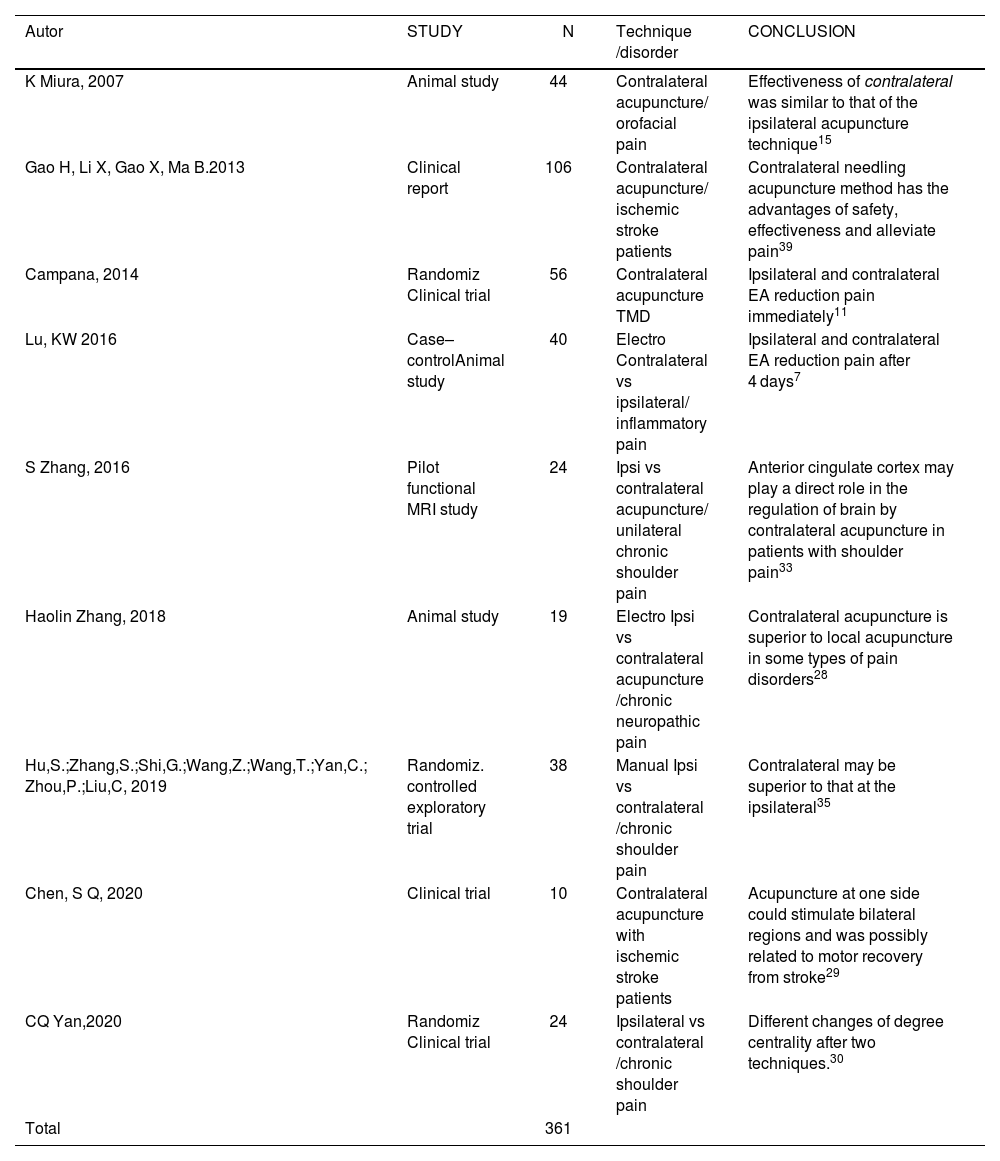In this article, a selective and critical study of the contralateral acupuncture technique was conducted. Integrating essential information from a perspective of scientific evidence, which proposes an understanding of the neurophysiological mechanism of its action. Contralateral acupuncture proposes to puncture the side opposite to the diseased side of the patient.
In our review of the literature, the articles showed that the technique is able to stimulate brain regions involved in the pain process, such as the cingulate cortex and the cerebellum. Decrease the pattern of pain and provide an increase in the range of motion of the affected region.
In addition, an important observation is that there are no scientific studies that relate this technique to orofacial pain or to Temporomandibular Disorder (TMD), except for one dissertation work.
As a conclusion, it was possible to observe that this therapeutic tool has the capacity to act at a distance from the affected area, it is possible to puncture the healthy side of the individual and obtain therapeutic results on the affected side. Avoiding the spread of a possible infection and reassuring the patient that they do not have to endure being punctured in an already painful region. A useful technique that requires more dissemination and research.
En este artículo se realizó un estudio selectivo y crítico de la técnica de acupuntura contralateral. Integrando información esencial desde una perspectiva de evidencia científica, que propone una comprensión del mecanismo neurofisiológico de su acción. La acupuntura contralateral propone puncionar el lado opuesto al lado enfermo del paciente.
En nuestra revisión de la literatura, los artículos mostraron que la técnica es capaz de estimular regiones cerebrales involucradas en el proceso del dolor, como la corteza cingulada y el cerebelo. Disminuir el patrón de dolor y proporcionar un aumento en el rango de movimiento de la región afectada.
Además, una observación importante es que no existen estudios científicos que relacionen esta técnica con el dolor orofacial o con el Trastorno Temporomandibular (TTM), a excepción de un trabajo de tesis.
Como conclusión, se pudo observar que esta herramienta terapéutica tiene la capacidad de actuar a distancia de la zona afectada, es posible perforar el lado sano del individuo y obtener resultados terapéuticos en el lado afectado. Evitar la propagación de una posible infección y tranquilizar al paciente de que no tiene que soportar ser pinchado en una región ya dolorosa. Una técnica útil que requiere más difusión e investigación.











